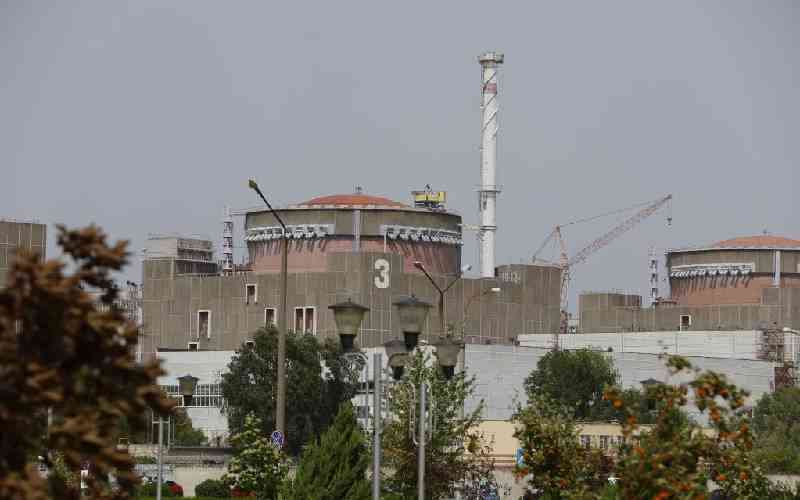Donor fatigue is real, but in Kenya the majority are ailing with sleaze fatigue.
Another week and another scandal induces another bout of depression for the faint-hearted. No wonder many unashamedly claim they neither read newspapers nor watch news anymore; it all seems so hopeless and helpless. We have moved from millions to billions and soon trillions of shillings looted as we remain unaffected but overwhelmed with the figures.
What is most interesting to observe, however, is the amount of space given to a particular scandal and for how long that story remains in the news. Take the account of the non-existent dams in the North Rift. This made headline news for two weeks. The amount ‘disappeared’ was Sh21 billion.
Two weeks ago, however, the public was informed that the country would lose Sh900 billion over the proposed Lamu Coal powered electricity plant. Simple mathematics reveals that the bill passed on by President Uhuru Kenyatta to Mr and Mrs Ushuru Taxpayer is 40 times greater than the dam project. That revelation never made the headlines and disappeared by the third day.
Research from the Washington based Institute for Energy and Financial Analysis (IEFA) says Kenya will pay Sh36 billion each year for the next quarter of a century even if – mark you – the plant never operates. Yes, you read that correctly. According to IEFA, the figures were cooked to show that the proposed coal plant would produce cheap electricity. But in reality, the cost per unit would be Sh70, which is 10 times more than the investors would have us believe.
There is something bizarre and daft about this proposed coal power plant that defies reasoning. Imagine building a power plant with coal hauled from South Africa to a UNESCO World Heritage Site. The so called justification was that the country has a shortfall of electric power and to meet the increased demand this dirty source of energy would supply 981 megawatts (MW).
Yet, the energy regulator EPRA insists that even with 8.5 per cent annual growth in demand by 2030, Kenya can meet the entire need with clean renewable resources.
Moreover, President Uhuru Kenyatta went to Paris last November and at a forum on the implementation of the Paris Accord told the world that Kenya would by 2020 be powered by 100 per cent of green, renewable energy. But why he has not cancelled this crazy, dangerous, expensive and unnecessary project in Lamu.
Kenya has made significant advances with geothermal, wind and solar power that is already producing 87 per cent of the country’s energy requirements. So what is really going on?
Part of the problem is that the National Environment Management Authority (Nema) granted Amu Power/Centum Investments together with Gulf Energy, a EIA License to proceed with the project. This decision has been challenged in the National Environmental Tribunal by Save Lamu organisation, which is represented by lawyer Lempaa Suyianka of Katiba Institute, where I am a board member.
The ruling is due tomorrow. Katiba Institute has argued that Nema’s prescribed role is not the promotion of economic development but to fulfil its independent, constitutional and statutory mandate. the authority is not a branch of the Executive, but has the responsibility to rigorously analyse the proposed project’s environmental and social impacts.
Katiba Institute has argued that there was insufficient public participation in the EIA Report and that only the findings were shared with the residents. Besides, the final report did not even consider the contents of the Climate Change Act, 2016 and thus ignored Kenya’s commitments to international treaties and the Paris Agreement.
It is both hoped and expected that the National Environmental Tribunal will listen to Save Lamu’s appeal and cancel the licence. Yet, Kenyans must be wondering how much of a grip Amu Power has over this government that has resulted in its deadly silence on this dirty deal.
Nema and the political class have constitutional obligations to put national interests of this and future generations before personal ones. Adrienne Rich once said that ‘lying is done with words and also with silence’.
Gabriel Dolan [email protected] @GabrielDolan1
Stay informed. Subscribe to our newsletter
 The Standard Group Plc is a
multi-media organization with investments in media platforms spanning newspaper
print operations, television, radio broadcasting, digital and online services. The
Standard Group is recognized as a leading multi-media house in Kenya with a key
influence in matters of national and international interest.
The Standard Group Plc is a
multi-media organization with investments in media platforms spanning newspaper
print operations, television, radio broadcasting, digital and online services. The
Standard Group is recognized as a leading multi-media house in Kenya with a key
influence in matters of national and international interest.
 The Standard Group Plc is a
multi-media organization with investments in media platforms spanning newspaper
print operations, television, radio broadcasting, digital and online services. The
Standard Group is recognized as a leading multi-media house in Kenya with a key
influence in matters of national and international interest.
The Standard Group Plc is a
multi-media organization with investments in media platforms spanning newspaper
print operations, television, radio broadcasting, digital and online services. The
Standard Group is recognized as a leading multi-media house in Kenya with a key
influence in matters of national and international interest.









